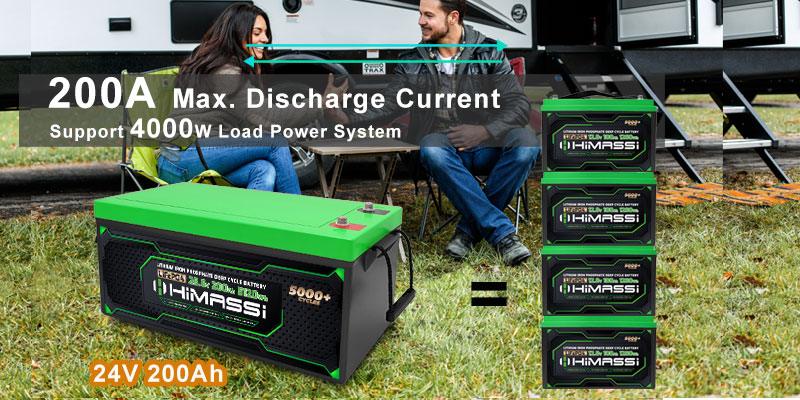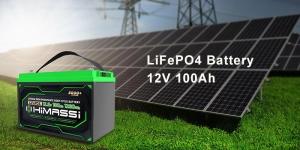12V vs 24V vs 48V – Which is Best for Your Solar System
Introduction
The choice of voltage in a solar system—whether 12V, 24V, or 48V—is more than just a matter of preference; it’s a crucial decision that influences the entire functionality and feasibility of your solar installation. The right voltage can enhance system efficiency, reduce costs, and provide scalability, making it vital to understand the unique characteristics and best applications for each option. This analysis isn’t just about technical specifications; it’s about aligning those specifications with real-world applications and needs, ensuring that every user maximizes their investment in solar technology.
This guide delves deep into the pros and cons of different solar system voltages, offering detailed insights to aid both newcomers and experienced users in making informed decisions that optimize performance and cost-effectiveness. We will explore various scenarios where each voltage type excels and discuss the trade-offs involved in selecting one over the others.
Details on 12V Systems
Advantages of 12V Systems:
-
Cost Accessibility: One of the most significant benefits of 12V systems is their affordability. The components are generally less expensive, which makes them ideal for those who are experimenting with solar power or need a budget-friendly option for small-scale applications.
-
Widespread Availability of Components: Due to their popularity in various applications including RVs, marine vehicles, and portable solar setups, 12V systems enjoy widespread component availability. This ubiquity ensures that replacement parts are easily obtainable and that there is a broad market of compatible accessories and add-ons.
-
Ease of Setup: 12V systems are particularly user-friendly, which makes them excellent for DIY projects. Their simplicity allows even those with limited electrical knowledge to set up and maintain their system, making them a popular choice for individual users and hobbyists.
Limitations of 12V Systems:
-
Higher Current Draw: The major drawback of 12V systems is their high current draw for a given power output. This can lead to significant energy losses through heat, especially when the system is scaled up to handle more substantial power demands. High current draw also necessitates the use of thicker, more expensive wiring to handle the increased load and minimize losses.
-
Limited Scalability: While 12V systems are excellent for small applications, their scalability is limited. As energy demands increase, the inefficiency of high current draw becomes more pronounced. This limitation makes 12V systems less suitable for larger homes or businesses that require a robust energy supply.
-
Reduced Efficiency Over Long Distances: For installations where components are spread out, the voltage drop associated with 12V systems can become problematic, leading to further inefficiencies and requiring additional considerations for cable sizing and placement.
These characteristics make 12V systems particularly well-suited for small-scale, portable applications where simplicity and cost are more critical than efficiency and scalability.
Details on 24V Systems
Advantages of 24V Systems:
-
Enhanced Efficiency: One of the standout benefits of 24V systems is their increased efficiency over 12V systems. The higher voltage allows for a lower current to achieve the same power output, which reduces energy losses due to heat in the wiring. This makes 24V systems more suitable for medium-sized applications where efficiency is a critical factor.
-
Reduced Wiring Costs: Because 24V systems draw less current, they require thinner wires compared to 12V setups. This reduction in gauge not only lowers the cost of wiring but also makes installation easier and less cumbersome, which is particularly advantageous in settings where wiring needs to be discreet or run over longer distances.
-
Better Suitability for Larger Installations: While not as robust as 48V systems, 24V systems strike a balance between affordability and capability, making them ideal for residential solar systems that go beyond the basics but do not require industrial-scale power solutions. They offer a good middle ground for those looking to expand their solar capacity without a significant jump to a 48V system.
Limitations of 24V Systems:
-
Higher Initial Investment than 12V Systems: Although 24V systems are more cost-effective in the long run due to reduced energy losses and wiring costs, the initial purchase price of components can be higher. This includes more expensive solar panels, inverters, and battery banks designed for 24V operation.
-
Less Availability of Components than 12V: While still widely used, 24V systems do not have as broad a market for components as 12V systems. This can sometimes limit choices in terms of component variety and availability, which might be a consideration for those looking for specific features or capacities.
-
Potential Overkill for Very Small Systems: For very small applications, such as small outdoor lighting setups or portable solar units, the advantages of a 24V system might not justify the extra cost and complexity, making 12V a more practical choice.
These factors make 24V systems particularly appealing for those in the middle ground—neither too small to benefit from efficiency gains nor too large to require the extensive setup of 48V systems.
Details on 48V Systems
Advantages of 48V Systems:
-
Maximum Energy Efficiency: The standout advantage of 48V systems is their superior energy efficiency. The high voltage significantly reduces current draw, which minimizes energy losses across the system’s components. This makes 48V ideal for substantial solar installations like those used in commercial properties or extensive residential compounds.
-
Scalability and Future-Proofing: 48V systems are highly scalable, capable of handling increased energy demands without significant losses. This feature makes them suitable for future expansions, such as adding more solar panels or integrating energy-intensive applications like electric vehicle charging stations.
-
Reduced Cable Thickness and Cost: Despite the higher initial system cost, the ongoing operational savings are significant with 48V systems. The lower current requirement allows for thinner and less expensive cabling, which also simplifies the physical installation process and reduces the overall weight and logistics during setup.
Limitations of 48V Systems:
-
Higher Initial Costs: The most significant barrier to 48V systems is the initial investment. The components, including inverters, batteries, and controllers, are generally more sophisticated and thus more expensive. This initial cost can be prohibitive for smaller operations or for individuals new to solar energy.
-
Complexity in Installation and Maintenance: With high voltages comes increased complexity in both installation and ongoing maintenance. Handling a 48V system typically requires professional installation and a deeper understanding of electrical systems to ensure safety and optimal performance.
-
Regulatory and Safety Considerations: Higher voltages require stringent adherence to safety standards and regulations. Proper insulation, protective equipment, and potentially even special permits might be necessary, adding to the complexity and cost of deployment.
Ideal Use-Cases for 48V Systems:
Given their attributes, 48V systems are particularly beneficial in settings where long-term efficiency and scalability are prioritized over immediate cost savings. These include:
-
Large residential installations aiming for near-complete energy independence.
-
Commercial setups where high energy demands are a constant, such as in manufacturing facilities or large office buildings.
-
Communities or co-ops that share a centralized solar power system.
48V systems represent the pinnacle of current solar system technology, offering the best in efficiency and future scalability, albeit at a premium. They are the go-to choice for serious solar applications where compromise is not an option.
Choosing the Right System Voltage for Your Needs
Choosing the correct voltage for your solar system is a critical decision that impacts not only the cost and performance but also the future scalability and flexibility of your installation. Here’s a deeper exploration into the factors you should consider when selecting the appropriate system voltage:
System Size and Power Requirements:
-
Small Systems: For small setups like RVs, boats, or small cabins, a 12V system often suffices. It’s easy to manage and compatible with many low-power appliances and charging systems.
-
Medium-Sized Systems: Residential homes typically benefit from 24V systems, which offer a good balance between cost, efficiency, and ease of installation. They can handle moderate power loads more efficiently than 12V systems and are easier to manage than 48V systems.
-
Large Systems: For larger homes, businesses, or for community power systems, 48V is advisable. Its high efficiency and lower current make it ideal for extensive installations with high power demands.
Budget Considerations:
-
Initial vs. Long-Term Costs: While 48V systems may have a higher upfront cost, they can be more economical in the long run due to lower operational losses. Assessing your budget not just for the initial setup but also for long-term savings is crucial.
Expansion and Adaptability:
-
Future Proofing: If you anticipate growing your system, consider starting with a higher voltage system like 24V or 48V. These systems are better suited to scaling up and can accommodate future additions more seamlessly than 12V systems.
Local Availability and Support:
-
Component Sourcing: Before deciding on a system voltage, check the availability of components and local technical support. Some regions may have better support infrastructure for certain system voltages.
The Role of Himax Electronics in Solar Systems
Himax Electronics is at the forefront of providing solutions that enhance the efficiency and sustainability of solar systems. Our products cater to a wide range of applications, from small-scale residential to large-scale commercial installations. Here’s how we support different system voltages:
-
Technology and Innovation: Himax Electronics utilizes cutting-edge technology to develop battery management systems and inverters that optimize the performance of 12V, 24V, and 48V systems. Our innovations ensure that your solar system operates at peak efficiency, regardless of its size.
-
Custom Solutions: We understand that one size does not fit all in the solar industry. That’s why we offer custom solutions tailored to the unique needs and specifications of your solar system, ensuring compatibility and performance.
-
Sustainability Commitment: Himax is committed to promoting sustainable energy solutions. Our products are designed with eco-friendliness in mind, reducing environmental impact and helping our customers achieve their green energy goals.
Conclusion
Choosing the right voltage for your solar system involves a careful assessment of your current and future energy needs, budget, and the specific characteristics of each system type. Whether it’s 12V, 24V, or 48V, each has its place in the solar industry, and the choice depends heavily on individual requirements and circumstances.
About Himax Electronics
At Himax Electronics, our goal is to empower our clients with high-quality, innovative energy solutions that not only meet but exceed their expectations. We specialize in providing robust support and expert guidance in selecting and maintaining the optimal solar system(SOLAR BATTERY) for your needs, ensuring longevity and efficiency. Discover more about how our products can revolutionize your energy solutions by visiting our website or contacting our support team.





